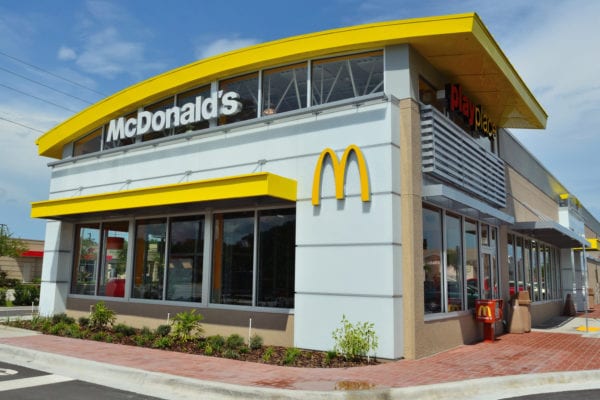Skift Take
It's a familiar story of bad real estate decisions and branding mistakes fueled by millions of private equity dollars that didn't leave much room for Honeygrow to slow down and expand in a measured, deliberate way.
— Erika Adams
Honeygrow, a fast casual stir fry and salad chain based out of Philadelphia, announced last week that it would be exiting the Chicago market, closing down several locations in New York and D.C., and pulling back on all expansion efforts in 2019.
It’s a significant sign of trouble for the chain, which has been on an ambitious growth track since its inception in 2012. Founder and CEO Justin Rosenburg has long believed in the potential of Honeygrow as a real Sweetgreen or Cava competitor, and with the way that funding was poured into the company, he wasn’t the only one who was sold on that goal.
Honeygrow has raised a total of $70 million in funding over the course of its lifespan, the vast majority of which came in rounds secured in quick succession over the past couple of years: $25 million in June 2015, $20 million in November 2016, and another $18 million in December 2017.
Each of the large rounds were led by Miller Investment Management, a Philadelphia-based investment firm with a private equity arm that has a stake in several restaurant chains, including Five Guys and Hatch & Coop, a local fast casual fried chicken shop.
Other Philadelphia-area investors included developer and cable television heir Brook Lenfest (son of late cable industry billionaire H.F. Lenfest) and Rebecca Matthias, the founder and former president of publicly-traded retailer Destination Maternity.
Honeygrow’s co-founder, president, and chief financial officer David Robkin previously managed the investment group that backed successful Philadelphia restaurateur Stephen Starr.
Growing Pains
With each round of funding that Honeygrow secured, the pressure was on to scale the model and produce the right returns on investment. When Rosenburg closed the $25 million round in June 2015, he was operating four Honeygrow locations in and around Philadelphia. By the time the next round was raised a year later, Honeygrow had expanded to thirteen locations.
By December 2017, Honeygrow had over 20 locations in Philadelphia, D.C., New York, Illinois, Delaware, Massachusetts, and Maryland, and Rosenburg’s team was in the process of launching the smaller Minigrow format in New York, D.C., Boston, and Chicago.
Honeygrow’s store model is not easy to scale. Incorporating technology in the restaurant was important to Rosenburg from the beginning, but the specialized ordering kiosks required more time and effort to launch in new locations. And, like many emerging fast casual chains, Honeygrow featured a menu built around hyper-local ingredients.
As the brand expanded beyond its Philadelphia roots, Rosenburg’s team had to figure out where to source dozens of ingredients that fit the chain’s hyper-local standards in each new market that Honeygrow entered.
“The team that was in place at the time of expansion was dedicated and hardworking, however, I feel that there was simply too much turnover and too small of a team to accomplish the level of successful growth that was intended,” a former employee at Honeygrow’s corporate offices who requested anonymity explained.
Branding Issues
Honeygrow was also running up against the fact that customers in new markets simply hadn’t heard of the brand before. Several former employees on Honeygrow’s corporate team told Skift Table that low brand awareness was tough to overcome in new markets.
“I think with a lot of companies making moves like that, geographically, to other cities, you really need a strong marketing plan in place to get brand recognition right at opening and then stay strong,” David Katz, Honeygrow’s former culinary director, told Skift Table. “There were challenges in that respect, for sure, with brand awareness and getting the brand ready for the masses in these other cities.”
The issue was exacerbated with the launch of Minigrow, Honeygrow’s offshoot that was meant to plug into smaller urban locations. Not only did the concept have a different name, but the ordering process was completely different as well. There were no kiosks or a set menu board; instead, customers moved down an assembly line similar to Sweetgreen or Dig Inn, customizing bowls often with different ingredient choices than Honeygrow. The dessert bar at Honeygrow, called Honeybar, also didn’t transition over to Minigrow.
The changes inside and outside with the new restaurant format made it feel like a wholly separate brand from Honeygrow, which wasn’t yet established itself. “If no one knows what Honeygrow is, no one is going to know what Minigrow by Honeygrow is, at least if you don’t have an adequate marketing budget to get the word out,” the employee said.
Minigrow had been the internal name that Honeygrow’s team used to refer to the concept while it was still being built and before it went to market, according to another former employee at Honeygrow’s corporate office. Instead of reworking the name before the concept went live, Minigrow simply became the public-facing brand.
“A lot of [the branding decisions] were ego driven and I don’t mean that in a bad way,” the former employee, who also requested anonymity, said. “You have to passionately believe in what you’re doing just to get it off the ground.” But thinking that the Honeygrow brand identity was strong enough to support the Minigrow brand, especially outside of the company’s hometown of Philadelphia, was a mistake.
“People were asking, ok, ‘What’s a Minigrow?'” the employee said. “Enough people already ask, ‘What’s a Honeygrow?'”
A Slower Approach
Going into next year, Honeygrow will not expand to any new locations, instead doubling down on efforts to grow existing restaurants. According to information listed on its website, the company will operate 25 Honeygrow locations going into 2019.
The $18 million round of funding that Honeygrow secured in December 2017 was specifically earmarked for the expansion of Minigrow, which has now been downsized to four locations. (A Minigrow near Skift Table’s New York office closed last month.)
As Honeygrow takes the next year to pause on expansion and fix existing problems, there’s still potential for the concept to succeed. “I think it’s a great brand and a great concept,” Katz, the former culinary director, said. “And there’s a really smart guy behind it all. He’s more focused than anyone I’ve ever worked with.”
“Honeygrow saw excellent growth in the past few years, but with growth comes many learning experiences,” Rosenburg, Honeygrow’s founder and CEO, said in an email statement provided to Skift Table. “We came to the realization that we had some work to do, and instead of ignoring the challenges at hand, we made the difficult decision to close any locations where those challenges were most apparent.”
The closures affected 75 to 100 employees, according to Restaurant Business. Rosenburg declined to provide any further information to Skift Table regarding the layoffs.
“My key motivation for this brand isn’t just to scale, but to truly make it a sustainable business for years to come,” Rosenburg said in the statement. “We’ve learned a lot through this whole process, and will continue to take the necessary steps to evolve and set the brand up for future successes.”



